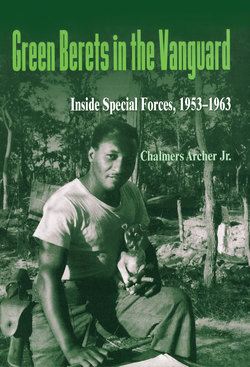Описание книги
The author of an award-winning memoir about growing up black in Mississippi, Chalmers Archer turns his attention in this book to his experiences as one of the first members of the U.S. Army's Special Forces. His perspective is unique, not only as one of the first to wear the Green Beret but as a black man in the early days of armed forces integration.
Archer participated in some of the earliest forays into Laos, long before Southeast Asia was in American headlines, and he was a member of the first U.S. unit to go into Vietnam. He trained the first Special Forces teams of the South Vietnamese army and participated in some of their earliest operations, many of them unknown until now because of their highly classified nature. He saved the lives of the first American and Vietnamese soldiers injured in war and also witnessed the first American combat death in Vietnam, holding the man in his arms as he died. His unit operated alongside the Central Intelligence Agency and helped influence American foreign policy. A self-described soldier-teacher, he developed and spread the early gospel of special warfare while serving in the Philippines, Hawaii, Korea, Taiwan, and Panama, as well as in Southeast Asia. All of these activities are fully chronicled in this book, but Archer's perspective as an African American in an elite unit of the U.S. armed forces in the 1950s gives his memoir additional depth and insight. It is an uplifting–though sometimes harrowing–story of struggle in unfamiliar environments and an eye-opening account of events little known today.
Archer participated in some of the earliest forays into Laos, long before Southeast Asia was in American headlines, and he was a member of the first U.S. unit to go into Vietnam. He trained the first Special Forces teams of the South Vietnamese army and participated in some of their earliest operations, many of them unknown until now because of their highly classified nature. He saved the lives of the first American and Vietnamese soldiers injured in war and also witnessed the first American combat death in Vietnam, holding the man in his arms as he died. His unit operated alongside the Central Intelligence Agency and helped influence American foreign policy. A self-described soldier-teacher, he developed and spread the early gospel of special warfare while serving in the Philippines, Hawaii, Korea, Taiwan, and Panama, as well as in Southeast Asia. All of these activities are fully chronicled in this book, but Archer's perspective as an African American in an elite unit of the U.S. armed forces in the 1950s gives his memoir additional depth and insight. It is an uplifting–though sometimes harrowing–story of struggle in unfamiliar environments and an eye-opening account of events little known today.
